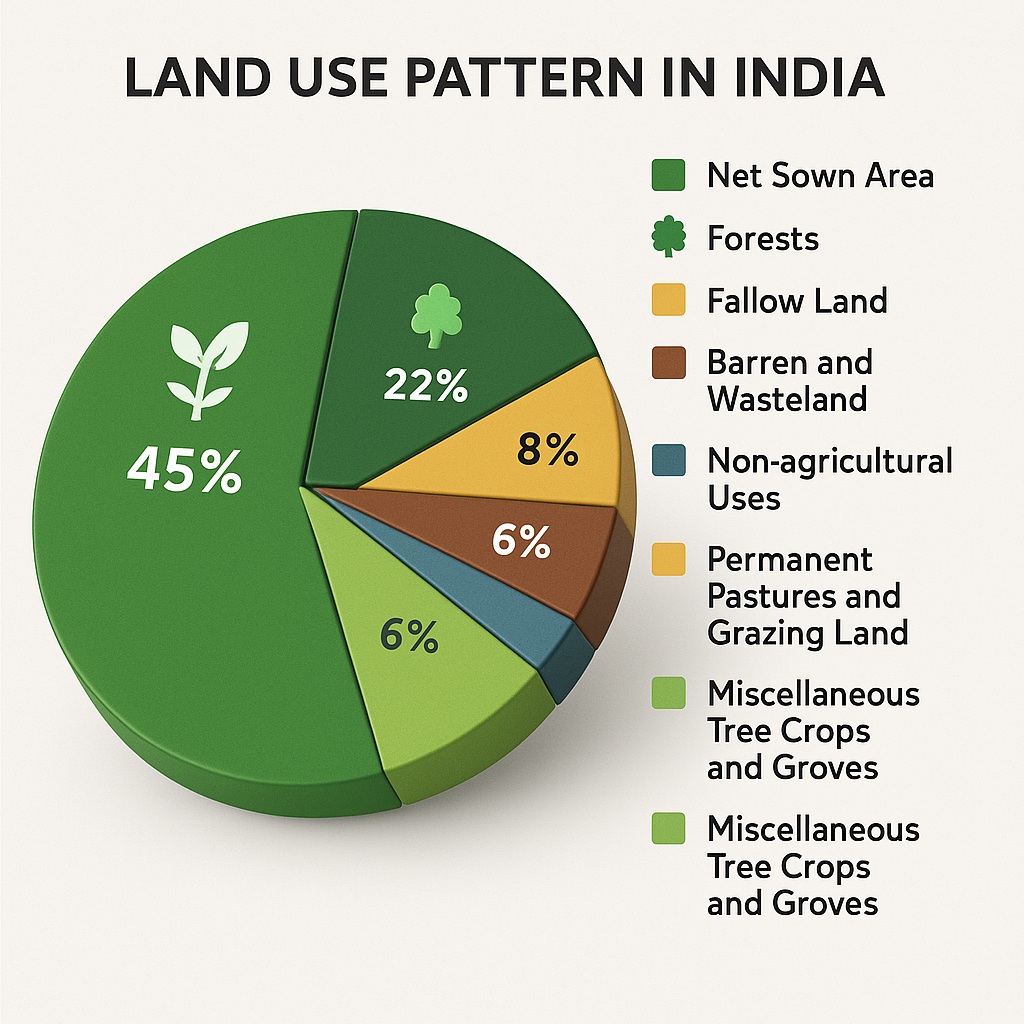Land is a crucial resource that plays a significant role in the economy, society, and environment of a country. In India, the land is a vital component of the rural economy, with around 60% of the population engaged in agriculture and allied activities. The country’s land resources are diverse, ranging from fertile alluvial soils to arid and semi-arid regions. This article aims to provide an overview of land resources in India, the challenges faced, and the opportunities available.

Table of Contents
Land Resources in India
India is a vast country with a land area of around 3.28 million sq km. The land resources can be classified into four categories: agricultural land, forest land, wasteland, and other land. As per the latest estimates, the agricultural land constitutes around 54% of the total land area, forest land around 21%, wasteland around 8%, and other land around 17%.
Agricultural Land
Agricultural land is the most important land resource in India, providing employment to around 60% of the population. The land is used for growing various crops like rice, wheat, sugarcane, cotton, and jute. The agriculture sector in India is facing numerous challenges, including low productivity, water scarcity, and climate change.
Forest Land
India has a rich forest cover, with around 22% of the land area under forests. The forest resources provide wood, fuel, and other forest products, besides being a habitat for various flora and fauna. However, deforestation, encroachment, and forest degradation pose significant threats to the forest resources.
Wasteland
Wasteland refers to the land that is barren and not fit for cultivation. India has around 8% of its land area categorized as wasteland. The wasteland can be reclaimed through afforestation, soil conservation, and other land development programs.
Other Land
The other land category includes urban areas, water bodies, and other land uses. The rapid urbanization and industrialization have led to the conversion of agricultural land and forests into urban areas, posing a threat to the environment and food security.
Challenges
The land resources in India are facing various challenges, including land degradation, soil erosion, deforestation, and land-use change. Climate change, urbanization, and population growth are adding to the pressure on land resources. The inefficient use of water and fertilizers is leading to declining soil fertility and productivity.
Opportunities
India has a vast potential for land-based activities like agriculture, forestry, and horticulture. The government is taking various initiatives to promote sustainable land-use practices, including soil conservation, afforestation, and land development programs. The use of technology in agriculture, like precision farming, can improve productivity and sustainability.
Conclusion
Land resources are a critical component of the economy, society, and environment in India. The country has diverse land resources, including agricultural land, forest land, wasteland, and other land. The land resources face various challenges, including land degradation, deforestation, and climate change. However, there are ample opportunities to promote sustainable land-use practices and improve productivity and sustainability. The government, civil society, and private sector need to work together to ensure that the land resources are used efficiently and sustainably for the benefit of all.
Read: Geography Notes